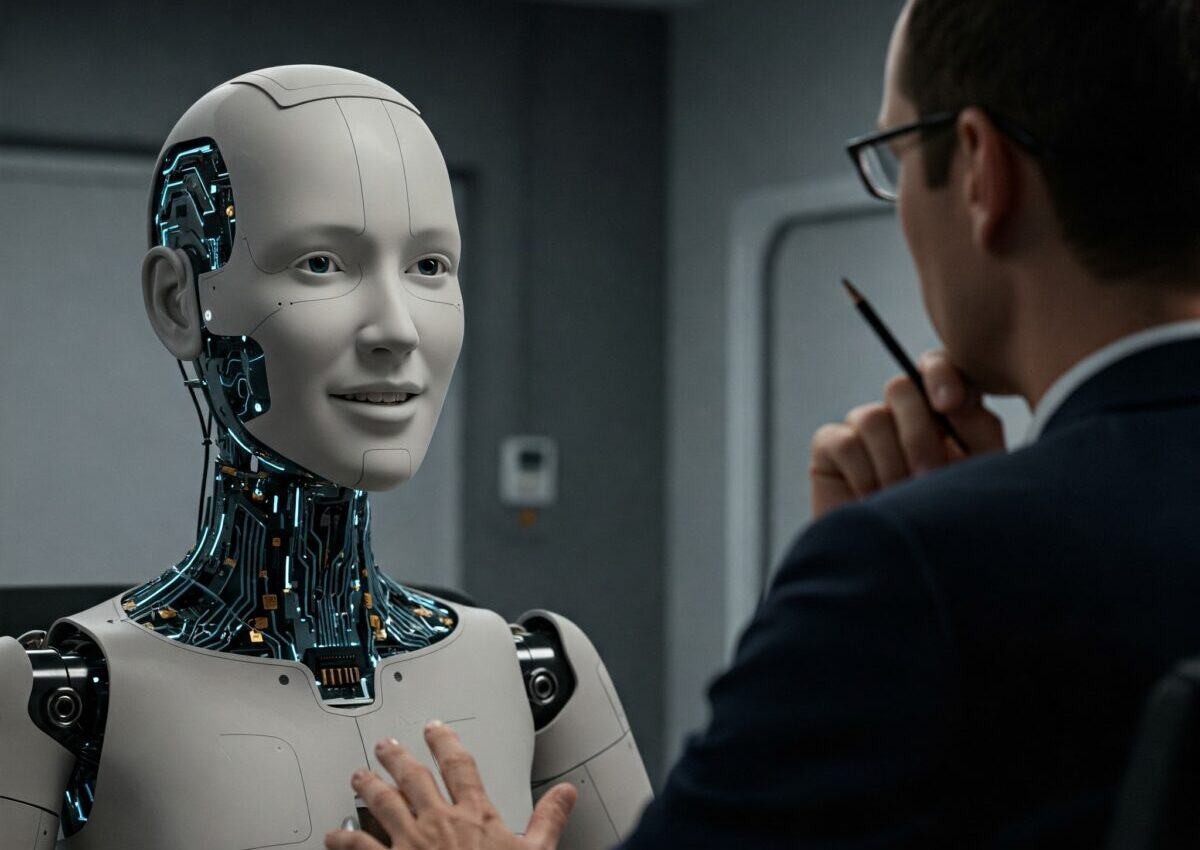The border is blurred between us and the machines
The scene has something futuristic, but it is more current than ever. A number of participants, sitting in front of screens, interact with entities that can't see: the people or, perhaps, machines. The task is simple: figure out who is on the other hand, to distinguish the human from the artificial. A game that has been going on for decades, ever since the mathematician Alan Turing, in 1950, he proposed a thought experiment to define the concept of “intelligence” in a machine.
The Turing test, as is known, does not focus on the “real” intelligence, or consciousness, but on a skill more pragmatic: the imitation. If a machine can fool an observer into believing they are human, then, according to Turing, it can be said that has a certain degree of intelligence.
Well, the news has made the rounds of the web in these hours: the latest version of the language model GPT, ChatGPT 4.5, would seem to have passed this hurdle. In a study conducted by the University of San Diego, GPT-4.5 has been mistaken for a human more often than not have been the same human participants.
But what does this mean? It is the proof that the AI has reached the awareness? The machines think like us? The answer is a clear and sharp “no”. What happened is a milestone impressive in its ability to simulate human behavior, to replicate our way of speaking, to manage the conversations, answer the questions. In other words, GPT-4.5 has become a formidable chameleon language, able to blend in with our voice and with ever greater accuracy.
The imitation game: how GPT-4.5 deceives the Turing test
The Turing test, in its classic version, provides that an evaluator human (often referred to as “the court”) to lead the conversations to text with two participants, “hidden”: a person and a machine. If the court, after a period of time, it is not able to distinguish with certainty who is the human being, it is said that the machine has “passed” the test.
The result obtained from GPT-4.5 is significant because this is not a simple ability to “babble” grammatically correct sentences. The model has been shown to be able to manage the context, to adapt its tone and show a broad understanding of the common language. And in some cases, even to simulate uncertainty, hesitation, or even a dash of humor. Elements that, until recently, were thought to be exclusively human.
But what is makeup? If “trick” we want to talk about, of course. The truth is that GPT-4.5 has been trained on a mole countless conversations human, learning to predict, with an unprecedented accuracy, which words and phrases are most appropriate in each situation. It is as if he had studied meticulously the “script” of human conversation, learning to reproduce not only the shape but also the essence.
Beyond simulation: What it really means this victory?
It is important, however, to maintain a framework of a realist. Pass the Turing test is not equivalent to obtaining the degree of “thinking being”. The test focuses on the ability of simulate the verbal behavior of man, not on the presence of a true consciousness or intelligence in the full sense of the term.
GPT-4.5, and the other IA that appear to be moving closer to this goal, they are extraordinary imitators, but still lack of awareness subjective, emotions, and desires, of intentionality. They are sophisticated tools, are able to manipulate words with skill, but without really “think” or “feel” like us.
Then, why this result is so much of a stir? Because it forces us to question our certainties. If a machine can pretend to be human so well deceive us, as we change our interaction with technology? How to change our perception of what it means to be “us”?
Risks and opportunities: A fork in the road for the future of communication
The implications of this shift are manifold and affect different areas of our lives.
- Communication: If we are not able to distinguish with certainty a human being by an AI, it will change our confidence in the digital communication? As we face the risk of deception and manipulation?
- Creativity: What it means to “originality” when the machines are capable of generating text, images, and music in the style of a human? How to change the roles of artists and creative?
- Job: In that way, the advanced AI language will affect the professions related to writing, translation, journalism, and teaching? What are the new skills required?
- Ethics: How do we ensure the responsible use and transparent of these technologies, preventing them from being used to spread misinformation, create a false identity or food fraud?
These are just a few of the questions that open up in front of us.
Beginning of a new era
The “overcoming” of the Turing test by GPT-4.5 is not a final verdict on the nature of intelligence. Rather, it is a wake-up call, an invitation to a deep reflection and urgent about how we want to build our relationship with machines.
The road is still long and unexplored. We are to be the major challenges, but also extraordinary opportunities to improve communication, creativity and our own understanding of intelligence. The important thing is to embark on it with awareness, a critical spirit and the determination to build a future in which the IA is a resource at the service of humanity.
